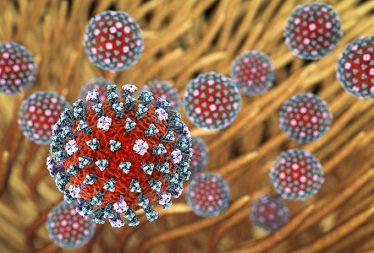BREAKING! Oropouche Virus Makes A Resurgence! 22 Cases In Bolivia. Possibly Behind Rise In Unexplained Fevers And Platelet Dips In India!
Nikhil Prasad Fact checked by:Thailand Medical News Team Apr 08, 2024 1 year, 7 months, 3 weeks, 5 days, 20 hours, 56 minutes ago
Medical News: After a long absence, the arbovirus Oropouche orthobunyavirus (OROV), which is predominantly mosquito borne but also spreadable by birds, sloths, marsupials and even primates is making a comeback and could be possibly be behind the rise in unexplained fevers accompanied by platelet dips in many parts of the world!
 Oropouche Virus Makes A Resurgence!
Oropouche Virus Makes A Resurgence!
The Oropouche orthobunyavirus (OROV) is among the most prevalent orthobunyaviruses, known to trigger a swift fever illness named Oropouche fever when it infects humans. Initially identified in Trinidad and Tobago in 1955 through a fever patient's blood sample and Coquillettidia venezuelensis mosquitoes, OROV was later isolated from a sloth (Bradypus tridactylus) and Ochlerotatus serratus mosquitoes in Brazil in 1960. This virus poses a significant public health concern in tropical and subtropical regions of Central and South America, affecting over half a million individuals by 2005. OROV is classified as an arbovirus due to its transmission method by Aedes serratus and Culex quinquefasciatus mosquitoes.
Oropouche fever manifests as an acute febrile illness, characterized by a sudden onset of fever accompanied by severe clinical symptoms. The incubation period usually spans 4 to 8 days, starting from the bite of an infected mosquito or midge.
The primary symptom is a high fever, often reaching temperatures of up to 40 °C (104 °F). Additional clinical manifestations encompass chills, headache, myalgia, arthralgia, dizziness, photophobia, vomiting, joint pains, epigastric pain, and rashes.
In some instances, the rash may resemble rubella, and patients may exhibit systemic symptoms such as nausea, vomiting, diarrhea, conjunctival congestion, epigastric pain, and retro-orbital pain.
While the initial febrile episode typically resolves within a few days, it's common for symptoms to recur with reduced intensity. Studies indicate that this recurrence occurs in approximately 60% of cases.
Health authorities in Boliva have identified about 22 cases in the country in the Pa Paz department (province).
According to local
Medical News coverages, 20 cases of Oropuche fever were detected in the Irupana district in La Paz while single cases were found in the districts of Cajuata and Chulumani.
https://www.hoybolivia.com/Noticia.php?IdNoticia=361641
It is believed that similar infections are also occurring in many parts of Central America and South America but because of proper diagnostics and test kits, such infections are not being picked up or being diagnosed.
Interestingly, parts of India like Chennai are also reporting a surge in unexplained fevers and also dropped in platelets counts although testing has ruled out dengue. It is very highly probable that the Oropouche virus could also be at play in India.
https://www.dtnext.in/news/city/rising-mer
cury-levels-spike-fever-cases-in-city-778198
It is imperative that healthcare authorities in regions where mosquito infections are rampant start also stocking up on relevant test kits for Oropouche virus and also start including in standard testing protocols alongside dengue, malaria, chikungunya, zika etc.
It should be noted that Oropouche Fever has no cure or specific therapy so treatment is done by relieving the pain of the symptoms through symptomatic treatment. Certain oral analgesic and anti-inflammatory agents can help treat headaches and body pains. There is also no vaccines for Oropouche fever.
For the latest
Medical News, keep on logging to Thailand Medical News.
